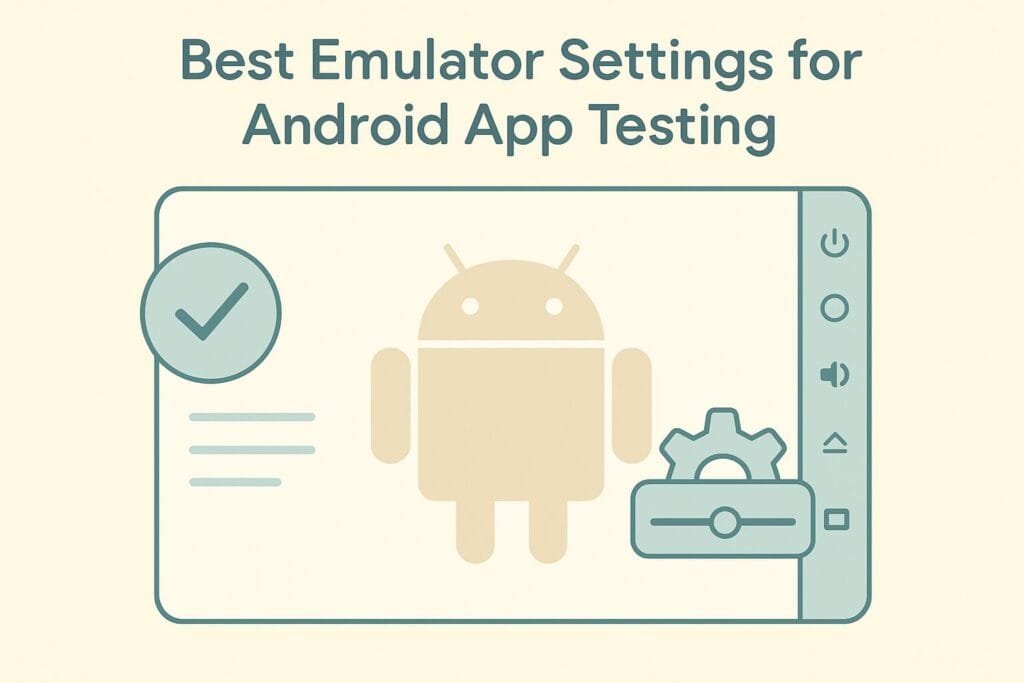Testing Android apps on an emulator is an essential part of the development workflow. Emulators provide a safe and efficient way to test applications across various Android versions, screen sizes, and device configurations without the need for multiple physical devices. However, to achieve optimal performance and accurate test results, it’s crucial to configure your Android Emulator with the best settings. In this article, we’ll explore the most effective emulator settings for Android app testing using Android Studio.

Why Emulator Settings Matter
The default settings in the Android Emulator may not always provide the best performance or compatibility with your app. Proper configuration can lead to faster app loading, more accurate UI testing, and a smoother debugging experience. With a few adjustments, you can drastically reduce lag, avoid unnecessary crashes, and test more efficiently.
Recommended Emulator Settings
Here are the best emulator settings you should consider for Android app testing:
| Setting | Recommended Value | Why It Matters |
|---|---|---|
| Device Type | Pixel 6 or Pixel 7 | Popular, modern reference devices for performance & design |
| System Image | x86_64 (API level 30 or higher) | Better performance, compatibility with Google Play services |
| Graphics | Hardware – GLES 2.0 or ANGLE | Leverages GPU for better rendering performance |
| RAM | 2 GB or higher | Prevents app from crashing due to memory overload |
| Internal Storage | 2 GB minimum | Adequate space for installing and running apps |
| SD Card | Optional – 512 MB | Useful for testing media-heavy apps |
| Frame Rate | 60 FPS | Simulates real device performance more accurately |
| Camera | Emulated or Virtual Scene | Useful for camera-related app features |
| Enable VT-x | Enabled in BIOS | Essential for running emulator on Intel-based CPUs |
| Cold Boot Option | Disabled (use Quick Boot) | Faster startup for repeated testing |
Additional Performance Tips
- Enable Hardware Acceleration: In Android Studio, go to Preferences > Appearance & Behavior > System Settings > Android Emulator and check Use Host GPU.
- Disable Unnecessary Services: Turn off animations, background sync, or location services when not needed.
- Use Physical Device Occasionally: While emulators are great, nothing beats real-world testing on a physical device.
Recommended Tools
For better experience and emulator alternatives, you might consider using Genymotion. It provides faster emulation and cloud-based testing options, especially useful for CI/CD pipelines. You can learn more about Genymotion here.
Conclusion
Having the right emulator settings not only enhances app performance but also saves time during development. Make sure to tailor settings based on your app’s needs—whether you’re testing a high-performance game, a lightweight utility app, or a media-based application. Regularly updating Android Studio and emulator images is also vital to ensure compatibility with the latest SDK features.

